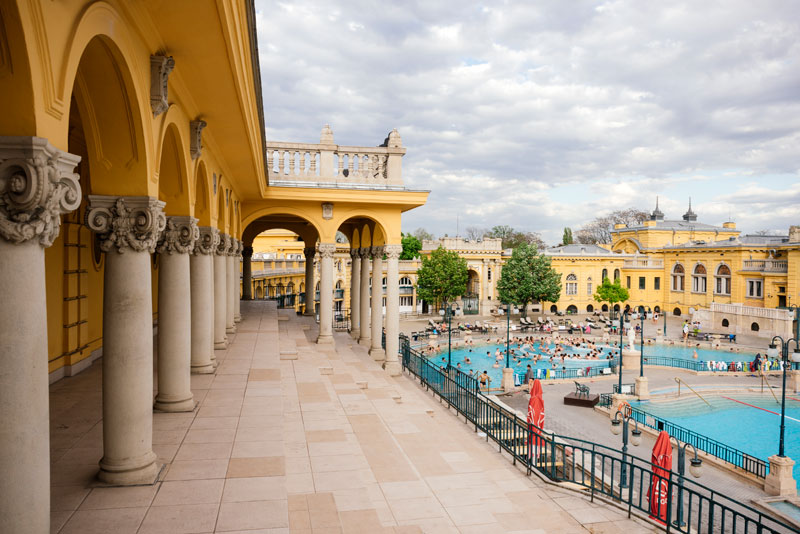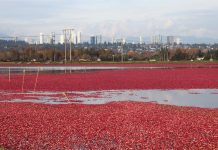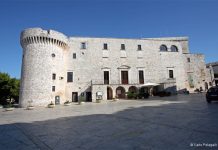
Budapest is a traveller’s gem. Beautiful architecture, steamy thermal baths and restaurants dot the city streets. It’s food and cultural scene rivals Paris, Rome or London.
In Budapest, you can have a nice dinner for a third or less of the price compared to Paris or other Western European cities, said Peter Toth, president of the Hungarian National Association of Manglica Breeders.
Manglica is an indigenous Hungarian bred woolly pig that resembles a cross between a pig and sheep. The deep red, highly marbled meat is prized for its tasty, creamy-textured white fat. The ‘Kobe Beef of Pork’ would make a perfect juicy Kahlua pork belly.
Hungary sits on the crossroads of the ancient caravan, crusade and migratory routes.
Hence, the country is exposed to many foreign influences. Over time, these influences added new ingredients and recipes to Hungary’s culinary collection.
“Hungary is a land where people’s hospitality and love of food make eating out an enjoyable experience,” said Zsuzsanna Sarmon of the Hungarian Tourism Agency.
Dubbed ‘Paris of the East’, Budapest, the capital dominates the country by population size and cultural attractions. Sarmon added,
Budapest is in a state of perpetual gastro revolution, which keeps the wealth of tradition alive
Traditional Hungarian Cuisine
Hungarian (or Magyar) cooking dates back a millennium when the Kingdom of Hungary was founded. The Magyar people (of Turkic origin) led by Prince Árpád moved from Etelkoz to the Carpathian basin in the 9th century.
Dishes reflect its nomadic past and influences such as those of neighbouring Slavic-speaking nations, Italy, Austria and Turkey. They consist of meats, seasonal vegetables, fruits, bread and dairy products.

Sarmon said the authentic Hungarian goulash is a must try. It’s a hearty soup with paprika, onion and beef cubes stewed with vegetables in a big cauldron.
The nomadic herdsman soup takes after the Hungarian word gulyás meaning shepherd. Other Hungarian specialties include halászlé (fisherman’s soup), lángos (deep-fried flat bread), töltött káposzta (pork and rice filled cabbage roll).
These two desserts are irresistible. Somlói galuska (sponge cake with chocolate, walnut, rum and cream) and kürtös kalács (chimney cake – a spiral, flaky, sugar coated dough roasted on a spit).
Transylvanian Traditions Bakery offers these delicious sweets in Vancouver. The chimney cake is best enjoyed warm, said owner Tunde Tar.
Culture, Opulence and History
Walking is a great way to burn off the calories and explore Budapest’s many lavish and stunning historical sites after a sumptuous culinary treat. The Danube River divides the city into two sections: Buda and Pest.
Castle Hill overlooking the Danube River on the Buda side features the 18th century Buda Castle (UNESCO World Heritage site), Fisherman Bastion and ornate Neo-Gothic Matthias Church.
Standing majestically on the Pest side is St. Stephen‘s Basilica, the keeper of Hungary’s most sacred relic, the purported Holy Right Hand of Hungary’s first King, Stephen I, also known as Saint Stephen.
An Árpád descendent, Stephen’s coronation in 1000 CE launched Hungary’s entry into the family of European Christian nation. The Holy Crown of St. Stephen is on display at the Hungarian Parliament Building, the country’s largest monument.

Land of thermal Spas
With more than 1,300 thermal springs nationwide, 123 in Budapest, there are plenty of warm, curative mineral waters to relax after a day of sightseeing.
Hungary’s Lake Hévíz is the largest biologically active thermal lake in the world, said Sarmon.
Affordable Travel
The travel boom has transformed many turn-of-the-century palaces and buildings to luxurious hotels and chic gourmet restaurants.
The euro has not replaced the Hungarian currency (forint). So travel including hotel bookings for Canadians is still affordable. Sarman wrote,
“In Hungary you can always find something historic or modern that touches your soul. Budapest is a truly European metropolis: you may find anything from Michelin-starred restaurants, ruin bars, luxurious five-star hotels to cozy apartments.”
“Hungary is a place where everyone can find something for their taste and budget.”
Posted: January 24, 2020 | Updated: January 05, 2025











































